- Astronomik Lunar calendar for 2024
The Astronomik calendar of the Lunar phases in 2024 is ready.
- Chistmastime and New Year 2023-2024
We wish you a merry Chirstmastime and a happy and healthy 2024...
- Astronomik Lunar calendar for 2023
The Astronomik calendar of the Lunar phases in 2023 is ready.
- Chistmastime and New Year 2022-2023
We wish you a merry Chirstmastime and a happy and healthy 2023...
- Shipping methods
Shipping as registred good shipment is no longer available
- How to observe planetary nebulae
A very nice introduction to observing planetary nebulas written by Owen Brazell
- Astronomik Lunar calendar for 2022
The Astronomik calendar of the Lunar phases in 2022 is ready.
- Website down
Our website was down on dec 20st...
- H-alpha imaging with a unmodified EOS R
Imaging with an unmodified camera using a H-alpha filter
- Astronomik Lunar calendar for 2021
The Astronomik calendar of the Lunar phases in 2021 is ready.
Camera Tilting Unit (CTU)
As the chips of modern CCD cameras get larger and larger it becomes more difficult to align them perfect perpendicular to the optical axis and parallel to the focal plane. Often the sensor is not mounted accurately in the camera housing and this can result in uneven sharpness and focus from one side of the sensor to the other, even though it may appear that you have mounted the camera properly. Here is where the Neumann CTU will help!
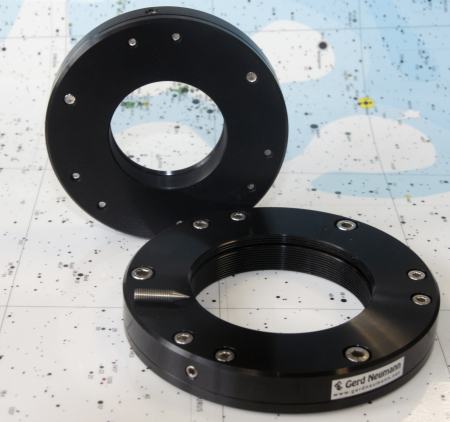
The Neumann CTU allows you to adjust the tilt of the focal plane very easily and very precisely. Similar units from other manufacturers have three pairs of push-pull screws at 120° and can be very difficult to adjust. Push/Pull screws are much too coarse and a lot of adjustment is done via elastic or even plastic deformation of the main body to achieve the required image plane movements.
In contrast, at the heart of the Neumann CTU are three radial screws with a very light cone shape formed at one end. By screwing these cones in, the two parts of the Neumann CTU are separated by a very small amount. A whole turn of a screw corresponds to a separation of only 0.2mm. Due to this fine movement and the large outer diameter of the Neumann CTU it is quite easy to adjust the position of the sensor to less that 1/100mm.
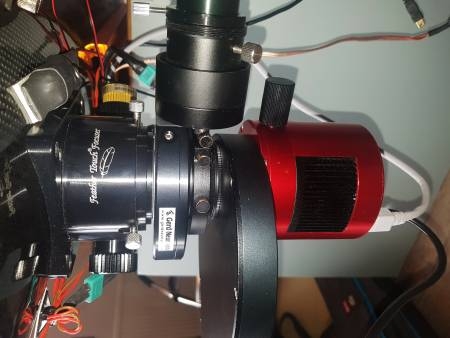
Both sides of the Neumann CTU are held together with three very strong packs of disk springs and secured with set screws. These springs provide a very strong holding force and also keep everything together. The overall tightness of the Neumann CTU is very high so if you mount a camera with a weight of less than 3kg to the Neumann CTU, you will not have to tighten the set screws (two for each radial adjustment screw). For use with heavy imaging outfits we added the set screws to be on the safe side but it is unlikely that even heavy camera assemblies will need them but should they be needed only very slight tightened should be necessary.
Here at Gerd Neumann Jr we believe our revolutionary Neumann Camera Tilt Unit will solve most problems associated with tilted focal planes that result from subtle miss alignments between camera and scope.
Citations from customers:
...but CTU knocked me out!
About 1 turn on the right "screw" (the second one fit) and the stars were round. At first I thought it would cost me a whole night, because I imagined it would be very "painful", but the opposite was the case.
This "thing" is simply fantastic!
Michael Becker, Kaiserslautern
Your CTU is impressive! I tried so many parts with which one should be able to adjust the tilt: None worked reliably. And with your CTU, it's so easy and fast, it's hard to believe.
I need to recommend your CTU
Ted Breden
...I'm very excited about these two CTUs. Ingeniously simple and effective. Both image fields are now completely flat. It couldn't be better!
Horst Ziegler
- Using the CTU in your setup will look like this:
Installation of two CTUs at the observatory of Horst Ziegler (AT) - The large CTU-2.7AP has female 2,7" Astro-Physics thread on both sides
- The smaller CTU-M48 has female M48x0.75 threads on both sides.
- The CTU-EOS has female M48x0.75 thread on one side and the Canon EOS bajonett on the other. You may mount all lenses with Canon bajonett on your CCD camera and you may adujst the focal plane very carefully.
-
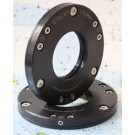
CTU XT M48
excl. VAT (Non-EU): €159.00 incl. VAT (EU): €189.21 -
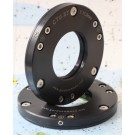
CTU XT M54
excl. VAT (Non-EU): €169.00 incl. VAT (EU): €201.11 -
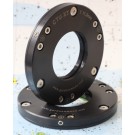
CTU XT M48/M54 Spezial Combi Version
excl. VAT (Non-EU): €184.00 incl. VAT (EU): €218.96 -
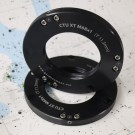
CTU XT M68x1
excl. VAT (Non-EU): €289.00 incl. VAT (EU): €343.91 -
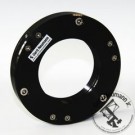
CTU XL (2x F 2,7" AP thread)
excl. VAT (Non-EU): €276.47 incl. VAT (EU): €329.00 -

Adapter M68x1(B) durchgehend
excl. VAT (Non-EU): €19.24 incl. VAT (EU): €22.90 -
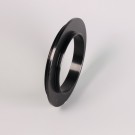
Adapter M68x1(B) auf M54x0,75(B)
excl. VAT (Non-EU): €41.21 incl. VAT (EU): €49.04 -
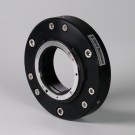
CTU M48 - Nikon
excl. VAT (Non-EU): €142.02 incl. VAT (EU): €169.00 -
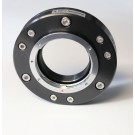
CTU / Neigeflansch M48 - Canon EOS
excl. VAT (Non-EU): €142.02 incl. VAT (EU): €169.00
...received the CTU today. Beautiful workmanship! I am imaging right now and have had a chance to adjust the tilt of the CTU. This is so much easier and accurate to use than the tilter that came with my XXX camera. This unit is among the best hardware I have used and compares very well to hardware from companies like Starlight Instruments, Televue, SBIG, Astro Physics.
Ray
The CTU comes in three sizes:
A wide variety of adapters is available.
The manual of the CTU is available as a PDF file upon request.
Some technical details:
Minimum thickness: 17,3mm,
Maximum travel: 1mm (both versions)
Outer diameter: 119mm (CTU-2.7AP) and 99mm (CTU-M48)

 Deutsch
Deutsch English
English